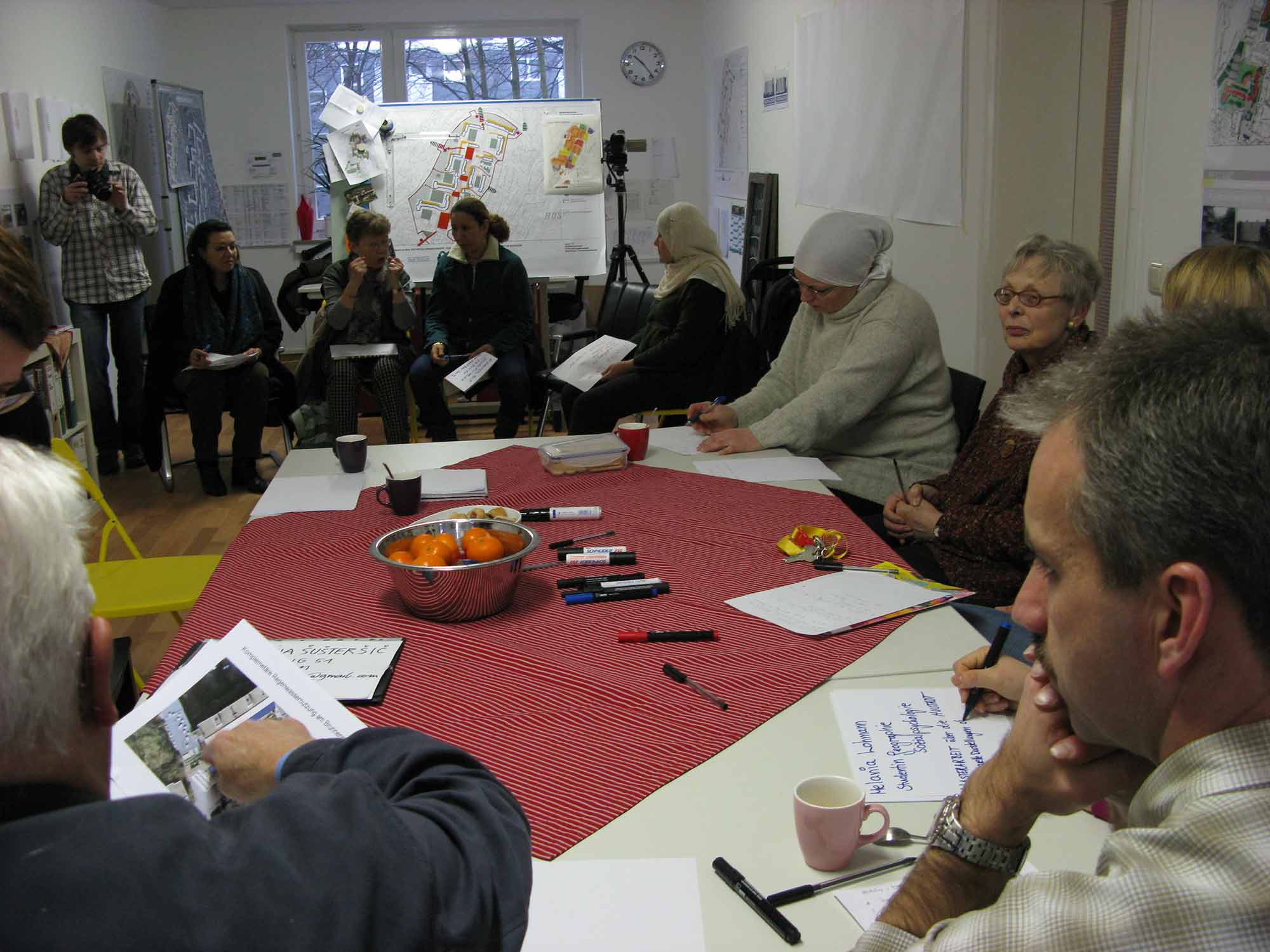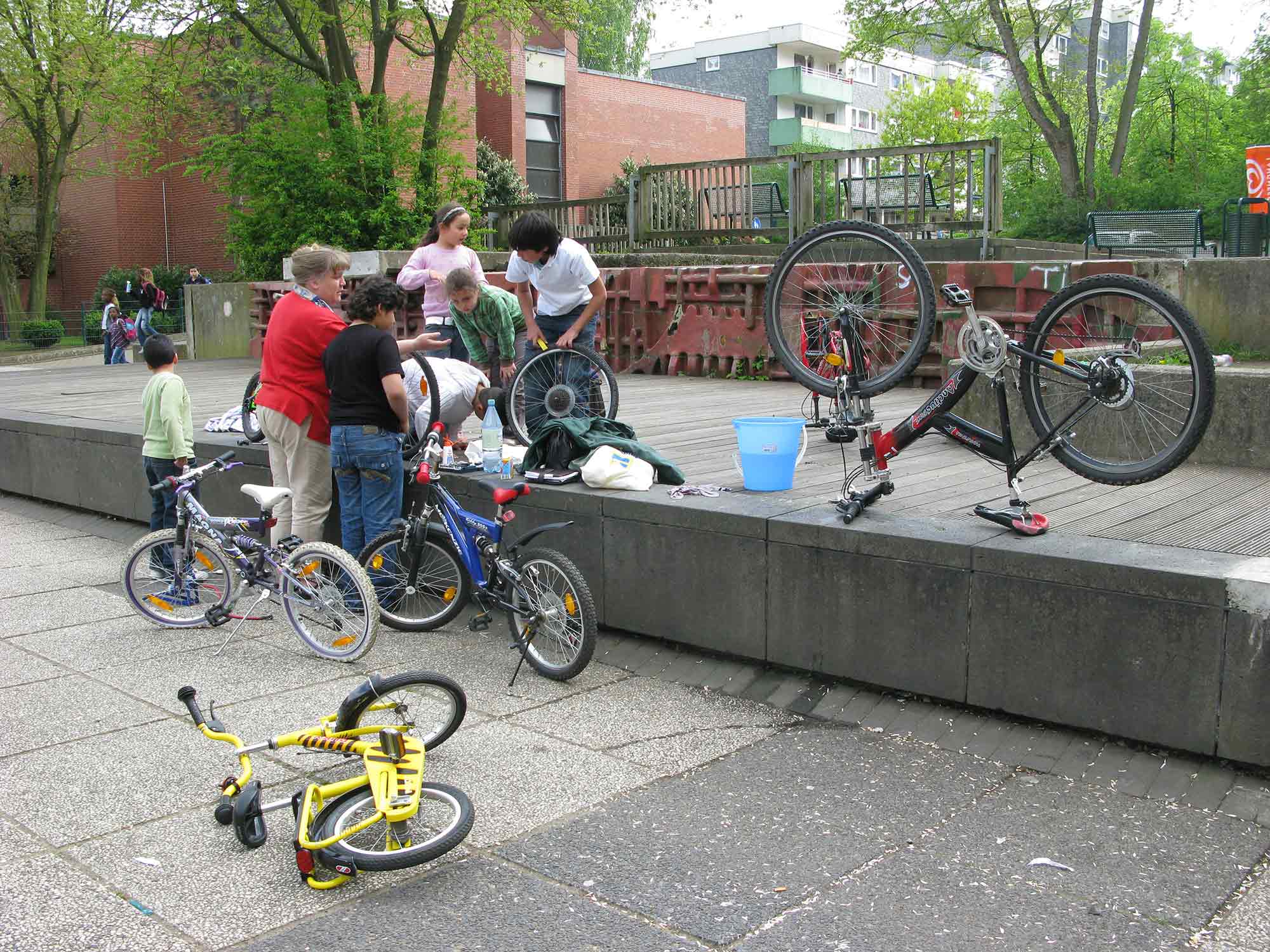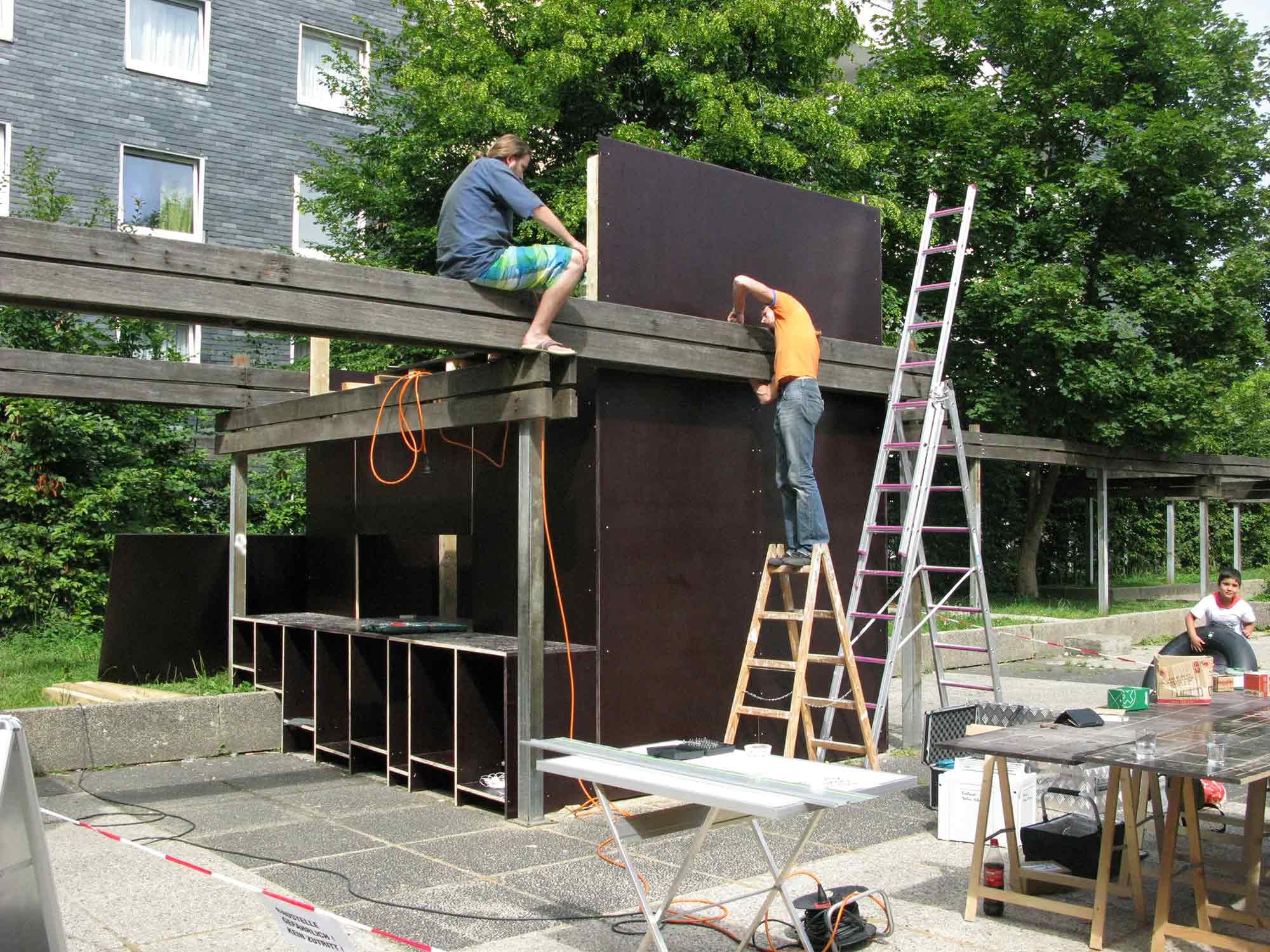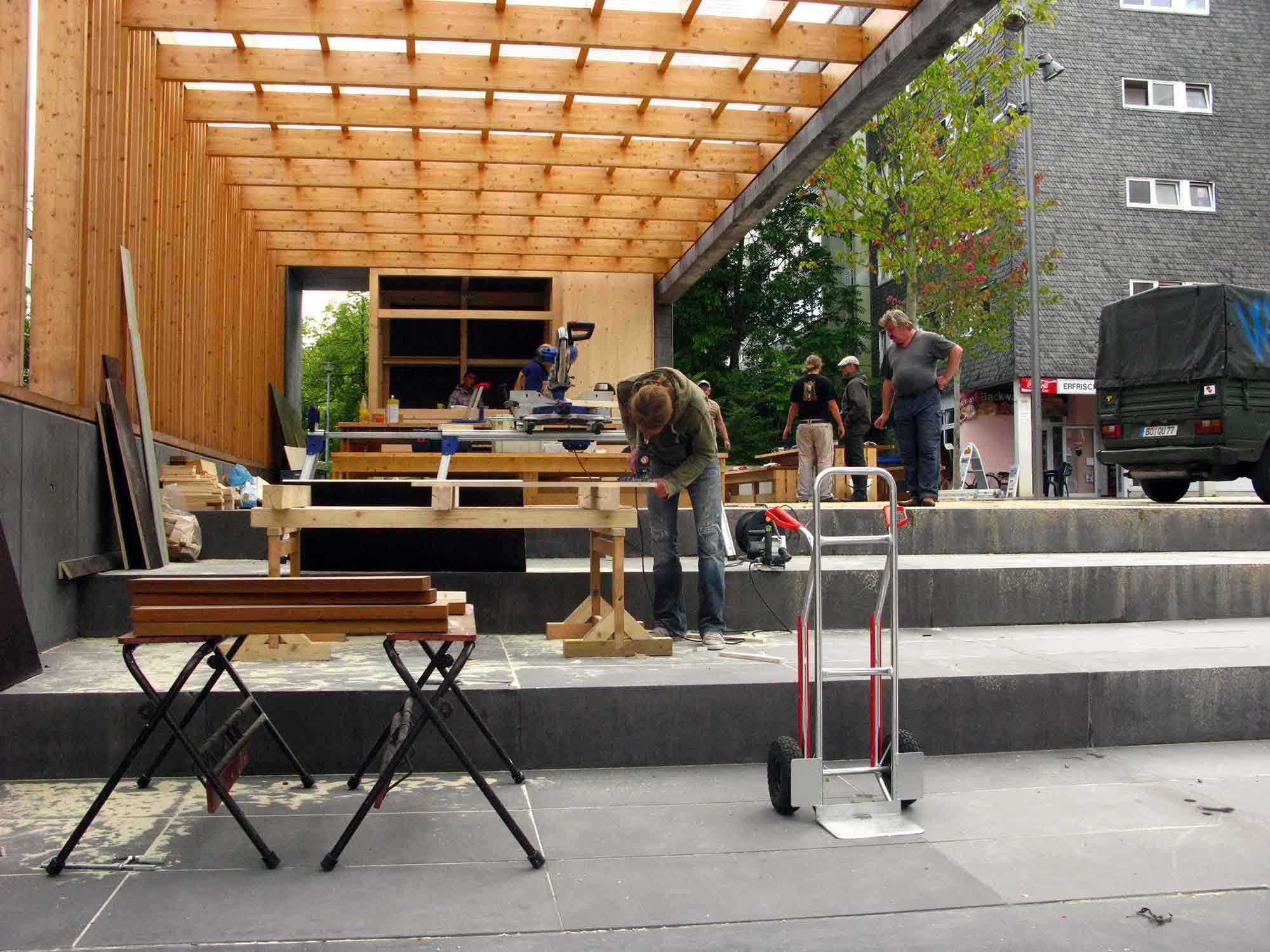- Login
Critical Spatial Practice








Apolonija Šušteršič’ practice is research based. Her approach attempts to multiply the relationships between research, teaching and socially engaged practice. Her work tends to broaden the scope of art and architectural discourse by bringing cultural, social and political issues together to create a concept and inform the making and thinking processes of both disciplines.
The Hustadt Project developed out of a very ordinary invitation from the City of Bochum (Germany) to make a public art work in the trans-cultural suburban neighbourhood of Hustadt. The art project was part of the bigger urban regeneration programme that has been set up by the Region North Rhine-Westphalia. When I began to investigate the conditions of the invitation, and the area, I learnt of a number of interesting issues and formed my project around them. The project focused on and discussed the distribution of power within the public space, the role of the artist within urban regeneration project, and the issue of ‘spatial justice’, related to the appropriation of public space as understood by different actors. The project includes and examines several aspects of my own practice such as: my critical approach, action research, the use of context as a material to develop a project, process as product, and public participation as a vehicle to generate community.
As an artist and researcher I immersed myself into the life of the place. I shared everyday situations with people living in Hustadt and together we created a platform for the participatory process.
The project generate several questions: how does this kind of art production situated within the immediate location contribute to change? And I’m wondering about who has the potential to generate change and how can this be performed? That is, a change beyond the market economy that creates new relationships between people without creating a major economic success. Is this kind of art production only possible when fulfilling the desire of the new economy? Can it become a field for creating new social relations by negotiation, process, and participation beyond political and market agendas?
(See my blog: http://www.hustadtproject.blogspot.com/)
Apolonija Šušteršič is a professor and a founder of an MFA study program Art & Public Space at Oslo National Academy of the Arts. She holds a PhD in Visual and Performing Arts from University of Lund, Malmö Art Academy, Sweden. She runs her own art / architecture studio practice in Oslo, Norway and in Ljubljana, Slovenia.She is an architect and visual artist. Her practice is research based, related to a critical analysis of space; usually focused at the processes and relationships between institutions, cultural politics, urban planning and architecture. Her broad – ranging interest starts at phenomenological study of space and continues its investigation into social and political nature of our living environment. She usually makes extensive researches into specific situations found on location, which she uses as a starting point of her project. The result isn’t only presented as analytical criticism but it produces in itself already a suggestion for the near future. She pursues new possibilities and makes proposals from a hybrid point of view that ranges beyond art and architecture, making socially committed projects naturally taking the form of everyday life activity. Her practice is imbedded within interdisciplinary discourse and usually includes collaborations with other professionals such as architects, urban planners, curators, sociologists, and local population.
She participated in a number of internationally published and exhibited projects, within and beyond the contemporary art institutions around the world, like Moderna Museet Stockholm, Berlin Bienale 2, Luxembourg City of Culture, Moderna Galerija Ljubljana, Marian Goodman, Paris, De Appel, Amsterdam, Generali Foundation, Vienna, Art Museum, University of Memphis, USA, Tirana Biennale 3, Tirana, Muhka, Antwerp, Edinburgh International Festival, Bildmuseet, Umeå, Galerie für Zeitgenossische Kunst, Leipzig, 12th Architecture Biennale, Venice, Artes Mundi 5, Gwangju Biennial among others.
My practice is situated in between disciplines; in between art and architecture, sociology and urban studies … It is an interdisciplinary practice concerned with space, location, situation that emphasises my personal involvement and subjective observations utilising and transforming methods from these fields along with inventing new tools and strategies. Through my practice I’m always questioning the relationship between contemporary art production and the urban regeneration process, the potential of a critical position that the artist occupies when becoming involved in the process of urban regeneration, and through this experience, a knowledge contribution to the critical spatial practice produced within contemporary art discourse.
Dan Graham, works and writings: Rock my Religion. Edited by Brian Wallis. (Cambridge, MA: MIT Press, 1993).
Jane Rendell, Art and Architecture: A Place Between (London: I.B. Tauris, 2006).
Sarat Marahaj, ‘Know-how and No-How: stopgap notes on “method” in visual art as knowledge production” Art & Research 2, no. 2 (Spring 2009): 1–11. http://www.artandresearch.org.uk/v2n2/pdfs/maharaj.pdf.




































































